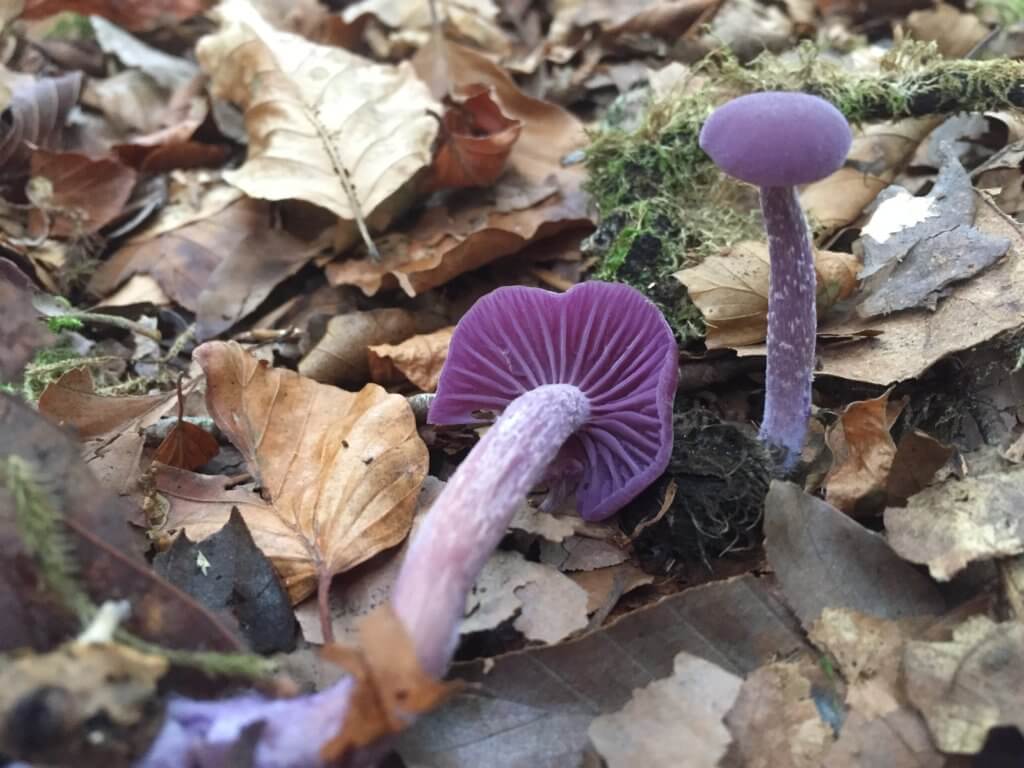
This is a very common species in the autumn and early winter in deciduous woodland, mostly under Beech trees in my part of the country. It provides an excellent example of the concept of ‘search image’ whereby things become much easier to find once you have got your eye in.
You wouldn’t think that vivid purple would be a good colour choice for blending into the background but, somehow, they manage it very well. And yet, in a good area, if you can find one or two, the brain learns how to pick them out. The seemingly bare forest floor gradually resolves into a faint purple haze and you realise you are surrounded by hundreds of them.
Its greatest asset is not its taste, though it is nice enough, but the amazing colour. It has a pleasingly-high shock value if served to guests that are not 100% committed to the wild fungi cause, giving lie to the unwritten, but almost universally-accepted, rule that a bright purple fungus cannot possibly be edible. Thankfully, they keep their colour when cooked.
Mentioning the name just as the meal is served helps add to the tension, though the second part is far more appropriate to its close cousin ‘The Deceiver’ which is also edible but so variable that it can indeed deceive the unwary. It’s rather hard to confuse the Amethyst Deceiver with anything else – though not impossible so, as always, do make absolutely sure before experimenting on your guests.
Previous ‘Wild food’ posts by Ian Carter:
[registration_form]
Our oft pollarded pussy willow in the garden yielded an excellent crop of oyster mushrooms this year. Made a great mushroom soup.
Richard – sounds yummy
Makes a spectacular omelette along with chanterelles!…
I’ve photographed it but never eaten them, perhaps I will now they sound very good.